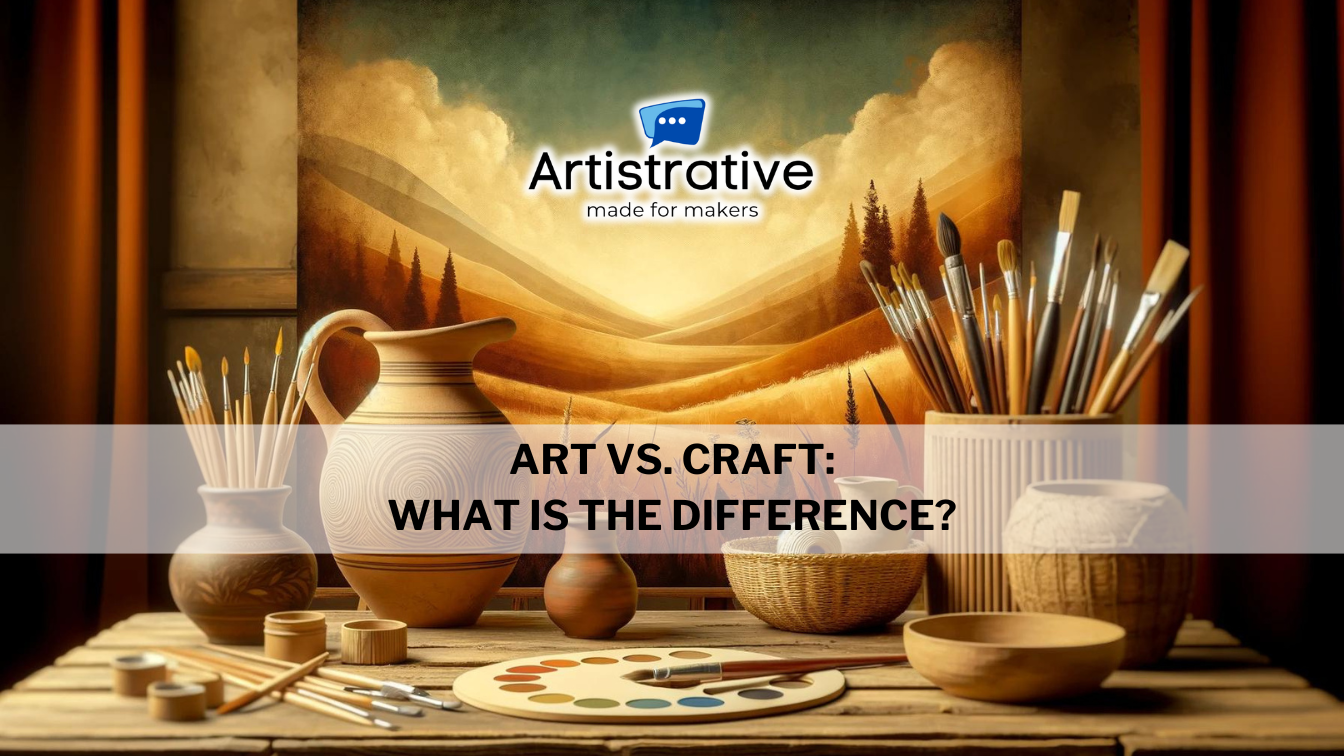Ever wondered where the line between art and craft lies? Spoiler alert: it’s not as clear-cut as you might think! Let’s dive into a colourful discussion that spans centuries and continents, shedding light on this ever-evolving debate.
A Tale of Two Definitions
Traditionally, “craft” refers to creating functional objects with a high degree of skill. Think of potters moulding clay, glassblowers shaping molten glass, and carpenters carving wood. These artisans transform everyday materials into useful items, often guided by generations of tradition and honed techniques. Craftsmanship involves meticulous attention to detail and an emphasis on utility, though the results can also be visually stunning.
On the other hand, “art” is often seen as the realm of those who pursue beauty and expression for its own sake. Painters, sculptors, and other fine artists create works that primarily aim to evoke emotions, provoke thought, or convey a vision. Historically, art has been about exploring and expressing ideas, often pushing the boundaries of what is visually or conceptually possible.
The Guild Era: Artisans Before Individual Recognition
Before the Renaissance, the structure of artistic and craft work was quite different. Artisans, including those we might now call artists, worked within guilds—organized, communal groups that controlled the practice of their crafts in various cities. These guilds maintained high standards, set prices, and regulated the quality and workflow. Most importantly, during this period, artisans were typically compensated for the volume of work they produced, not for any innovative or unique artistic expression. This system ensured consistent quality and safeguarded the trade secrets of each craft.
A Renaissance Revelation
In Florence during the 1400s, artists began to argue their case for being recognized—and paid—not just for how much they produced but for how brilliantly they did it. This marked a pivotal shift from viewing artists like any other labourers to seeing them as individual creators with unique visions.
Laura Morelli, in her TED-Ed lesson, explains how this Renaissance shift wasn’t just about art breaking away from craft; it was about artists breaking away from anonymity. This period saw the rise of individual recognition, where artists were valued for their unique contributions rather than being part of a collective output. It was a transformative time that redefined the roles and recognition of creative individuals.
The Global Tapestry
While the West was busy putting art on a pedestal, many other cultures around the globe didn’t even bother with this division. For them, art and craft have always been two sides of the same coin—both are seen as vital expressions of cultural identity and communal pride. Whether it’s a beautifully woven basket or a meticulously carved totem pole, each is as revered as any canvas in a gallery.
Today’s Crafty Conversations
Nowadays, the lines between art and craft are blurring more than ever. Modern movements and schools of thought increasingly celebrate craft as much as fine art, recognizing the skill, creativity, and conceptual depth that goes into both. And why not? Whether it’s a hand-thrown ceramic dish or a masterfully painted mural, both craftspeople and artists transform raw materials into something greater.
So next time you hear someone trying to label something as “just a craft” or “mere art,” remember: the division is both historical and somewhat arbitrary. We’re moving towards a future where we appreciate creativity in all its forms, without the need for restrictive labels.
For more on how our perceptions have been shaped and are still evolving, check out Laura Morelli’s TED-Ed lesson here. It’s a fascinating and enlightening 5-minute video I wholeheartedly recommend.
FOLLOW ME on social media for more tips and information: FACEBOOK | INSTAGRAM
